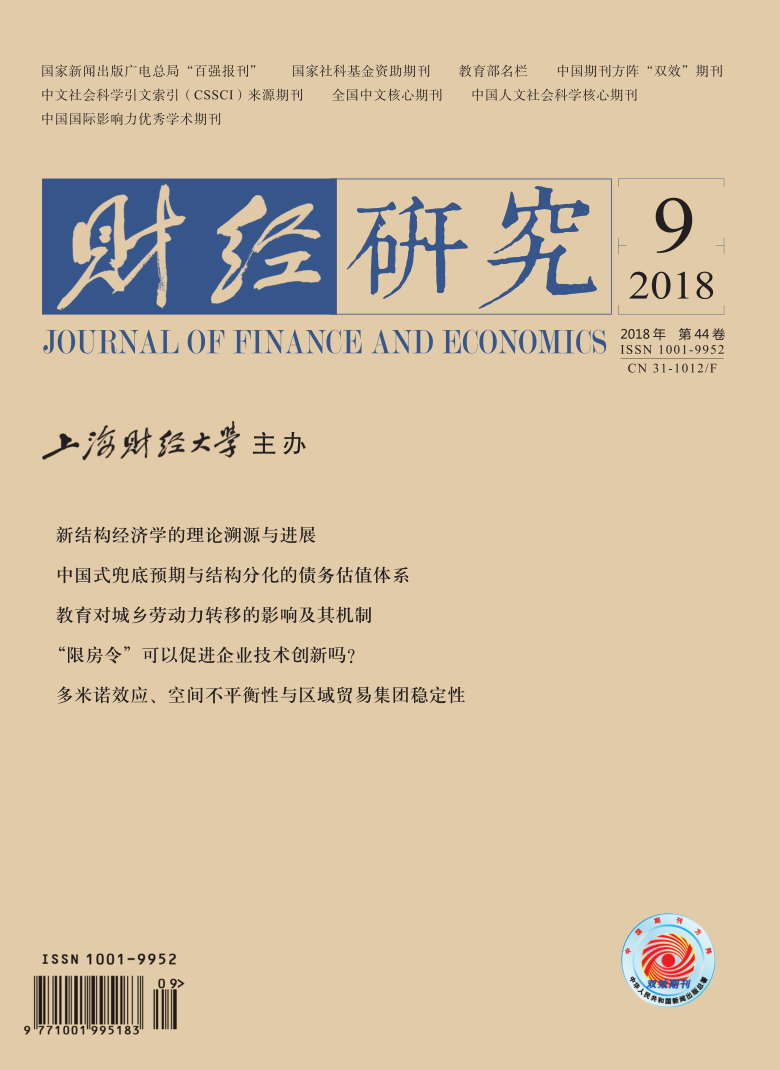Implicit guarantee protection and rigid payment are two typical forms of the Chinese-style compensation expectations. Based on the afore-mentioned compensation expectations, the article personifies the financing demand side into a borrower and assumes that its asset value is subject to random movement. In the context of the structural model, the article makes a dynamic dependent characterization for the expected solvency and pricing derivation for the debt financing cost of borrowers, and discusses the structural impact of compensation expectations on the debt financing cost of borrowers with high and low risk status. Series of numerical calculations indicate creditors tend to " underestimate” the debt financing cost of high-risk borrowers but " overestimate” the debt financing cost of low-risk borrowers, which leads to the structural differentiation of the debt valuation system. The Chinese-style compensation expectations are expected to uplift the market risk-free yield and connive with the risk-taking propensity of high-risk borrowers. Tempting by compensation expectations, more capitals are misallocated to high risk industries, departments or projects. In order to weaken the negative effects of Chinese-style compensation expectations, we should design the strategies or mechanisms according to their specific forms. The possible policy measures such as strengthening financial institutions’ financing constraints on local government debt is a desirable means to weaken the negative impact of the central government’s implicit guarantee, cutting off the implicit or hidden links between local governments at all levels and their financing platforms and clearly defining the corporate debt attribute of financing platform debts, resolutely breaking the rigid payment myth in the trust industry and prohibiting the corresponding behavior of banking financial institutions lack of principles, and encouraging market-oriented institutions or businesses to break rigid payment under the clear boundary of responsibilities. The modeling for the borrower’s self-solvency is similar to that of the corporate debt valuation model, but different from that, the article reveals the potential and complicated impact of compensation expectations, which is a common phenomenon in China’s economy and finance that has long been neglected in academic discussions, on the debt valuation of borrowers. In addition, the domestic literature on government implicit guarantee only empirically examines whether it has an impact on the borrower’s financing cost, rather than on the structural impact of the debt financing cost of borrowers with different risk status. This article reveals the structural differentiation of the debt valuation system and explains the phenomenon of capital misallocation from the perspective of compensation expectations.
 / Journals / Journal of Finance and Economics
/ Journals / Journal of Finance and EconomicsJournal of Finance and Economics
LiuYuanchun, Editor-in-Chief
ZhengChunrong, Vice Executive Editor-in-Chief
YaoLan BaoXiaohua HuangJun, Vice Editor-in-Chief
Chinese-Style Compensation Expectations and the Debt Valuation System with Structural Differentiation
Journal of Finance and Economics Vol. 44, Issue 09, pp. 41 - 51 (2018) DOI:10.16538/j.cnki.jfe.2018.09.002
Summary
References
Summary
[1] Chen B K, Jin X, Ouyang D F. Housing price, resource mismatch and productivity of Chinese industrial enterprises[J]. The Journal of World Economy, 2015, (4): 77-98. (In Chinese)
[2] Chen D F. The mechanism reasons of financing of constraints[J]. Journal of Financial Research, 2015, (2): 45-52. (In Chinese)
[3] Hu W M, Chen Y W. Distortions, misallocation and losses: Theory and application[J]. China Economic Quarterly, 2011, (4): 1402-1422. (In Chinese)
[4] Fang H X, Shi J K, Zhang G B. Property right, information quality and corporate bond pricing: Empirical evidence from China’s capital market[J]. Journal of Financial Research, 2013, (4): 170-182. (In Chinese)
[5] Liu H Z, Xu Y C. Debt restructuring of local government financing platforms and its risk mitigation[J]. Fudan Journal (Social Sciences), 2017, (6): 143-154. (In Chinese)
[6] Lu Z W. Hard redemption: The obstacle of marketization[J]. Financial Market Research, 2015, (1): 39-44. (In Chinese)
[7] Luo R H, Liu J J. Is local government’s invisible guarantee effective? An empirical test based on quasi-municipal bonds’ issuing price[J]. Journal of Financial Research, 2016, (4): 83-98. (In Chinese)
[8] Sun Z, Li Z Q, Wang J B. Nature of ownership, accounting information and debt contract: Empirical evidence from listed companies in China[J]. Management World, 2006, (10): 100-107. (In Chinese)
[9] Wang J, Luo L Q, Guo Q. Does local government intervention damage credit market efficiency?[J]. Journal of Financial Research, 2015, (4): 99-114. (In Chinese)
[10] Xing Z P, Jin L Q. Effect of government intervention on financial resources misallocation: Ownership differences[J]. Shanghai Journal of Economics, 2016, (4): 23-31. (In Chinese)
[11] Xu Y C. Credit risks and forward-looking provisioning requirements in industrial sectors: Based on the perspective of leverage and financing costs[J]. Journal of Finance and Economics, 2017, (7): 107-118. (In Chinese)
[12] Yan W T, Li Y. Increased pressure on local government debt rigidity[N]. Shanghai Securities Daily, April 2, 2014. (In Chinese)
[13] Zhang Q J, Li Y F, Mao X. Ownership structure, financial misallocation and total factor productivity[J]. Finance and Trade Research, 2016, (4): 9-15. (In Chinese)
[14] Zhong H Y, Zhong N H, Zhu X N. Are the urban construction investment bonds’ guarantees credible? Evidence from credit ratings and bond pricings[J]. Journal of Financial Research, 2016, (4): 66-82. (In Chinese)
[15] Zhou L A, Zhao Y Y, Li L X. Resource misallocation and political cycles[J]. Journal of Financial Research, 2013, (3): 15-29. (In Chinese)
[16] Cox D R, Miller H D. The theory of stochastic processes[M]. Lodon: Chapman & Hall, 1965.
[17] Duffe D, Kan R. A yield-factor model of interest rates[J]. Mathematical Finance, 1996, 6(4): 379-406. DOI:10.1111/mafi.1996.6.issue-4
[18] Wang C J, Dai T S, Lyuu Y D. Evaluating corporate bonds with complicated liability structures and bond provisions[J]. European Journal of Operational Research, 2014, 237(2): 749-757. DOI:10.1016/j.ejor.2014.02.024
Cite this article
Xu Youchuan. Chinese-Style Compensation Expectations and the Debt Valuation System with Structural Differentiation[J]. Journal of Finance and Economics, 2018, 44(9): 41-51.
Export Citations as:
For




 5272
5272  7046
7046

